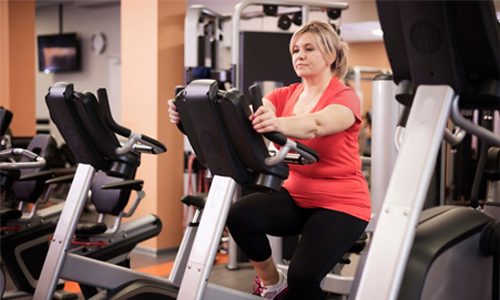How many of you feel that you are short? How many feel uncomfortable because of your short stature while standing with friends? Some of us feel that we are shorter than our siblings or other family members. Many of us keep thinking of our height to the extent that we become obsessed with it. One of the things that people around us ask us to do is cycle regularly for an increase in height. This leads us to the question, “Does cycling increase height?”
So, let’s find the answer to the question in this blog!
Factors Influencing Height
Several factors contribute to height increase. Some of them are listed below.
- Genetics
- Growth hormones
- Lifestyle factors like nutrition and exercise (environmental factors)
Many say that cycling does not directly increase height, as it is primarily determined by genetics and growth hormones. However, regular cycling as part of an active lifestyle can support overall health and well-being during childhood and adolescence. To maximize height potential, focus on a balanced diet, proper nutrition, and regular exercise. Talking about exercise, here are 5 exercises to improve your lower back strength!
Can Cycling Increase Your Height?
Cycling is an exercise, and any form of exercise is good for the body. Growth is rapid around the time of puberty for boys and girls. A balanced diet, combined with cycling, can contribute to an increase in height during the pre-teen and teen years. During this period of adolescence, the maximum height is achieved.
Cycling sprints are activities with high intensity. They are known to boost the production of growth hormones in the body, which in turn, increases height. Do you know that cycling also strengthens the lower back and helps with proper posture?
So, if you have the question, “Does cycling increase height?” in mind, the answer is “Yes, it can.” While at it, learn how your height isn’t determined by DNA alone!
How Does Cycling Increase Height?
Cycling can contribute to height increase when done during the growing years. In other words, a person in their pre-teens or teens, whose bodies are still growing to achieve the maximum height, can practice cycling. During these developmental stages, cycling plays a role in the stretching of the knees, hips, and ankle joints. This stretching results in longer legs, which makes you look taller!
Thus, in more ways than one, cycling can assist in an increase in height during a child/adolescent’s developmental years.
Is It Possible to Increase Your Height after 21 Years Old?
After the age of 21, it is not possible for cycling or any other form of exercise to increase height. During childhood and adolescence, growth plates in the bones will be open, and height is primarily determined by these growth plates, in addition to genetic factors. Once these growth plates fuse, usually by the end of puberty, the natural process of height increase comes to an end.
Cycling, however, remains an excellent form of exercise that offers numerous health benefits, including improved cardiovascular fitness, muscle strength, and overall well-being. While cycling cannot increase height after 21, it can contribute to maintaining a healthy lifestyle and promoting good posture.
Now, read on to find more about the answer to the question, “Does cycling increase height?”
Does Cycling Increase Height Daily?
Cycling is a popular physical activity enjoyed by people of all ages across the United States. Among the numerous benefits attributed to cycling, one common question that often arises is whether it can lead to a “daily” height increase. Again, the answer is, “It depends.” To understand this seemingly complex question and answer, you must first know certain things about growth and height increase.
Understanding Height Growth
As we have discussed earlier, height is primarily determined by genetic factors, but it can also be influenced by nutrition, physical activity, and overall health. During adolescence, individuals experience growth spurts, where their bones and tissues grow rapidly, contributing to an increase in height. However, once the growth plates in the bones close, usually in the early twenties, further height gain becomes unlikely.
The Role of Cycling
Cycling is an excellent cardiovascular exercise that strengthens muscles, improves posture, and enhances overall fitness. Now would be the best time to read about why you should do cardio workouts. While regular exercise is essential for a healthy lifestyle, it’s crucial to manage expectations when it comes to increasing height through cycling.
Cycling and Spinal Health
Cycling can have a positive impact on spinal health by promoting good posture and reducing the risk of conditions like scoliosis. Maintaining proper posture during cycling can maximize the benefits for spinal health.
Height Increasing Tips during Cycling
Let’s now take a look at some tips to increase your height during cycling!
1. Raise the Saddle
If you increase the height of your bicycle saddle, it causes a strain on your knees, hips, and also the ankle joints. This, in turn, leads to the activation of “developmental plasticity” – the capability of an individual to respond to an internal or external environmental input by showing some change in behavior. As a result, you will lengthen your legs to reach the cycle’s pedals. And, that’s how raising the saddle height can also increase your own height if practiced properly over a long period.
2. Place Your Feet Properly on the Pedals
To reap the benefits of cycling, such as increasing your height, you must place your feet properly on the pedals. Avoid being on tiptoes on the pedals. Ensure that your feet are flat and make yourself comfortable. This ensures that you follow the proper positioning of your body for cycling.
3. Avoid Hurrying Through Your Cycling
Allocate some time every day for cycling, making sure you don’t finish it in a hurry. Think of it as a way of relaxing, and don’t add it to the list of daily chores you must do. You can even listen to your favorite music during this time. To acquire the best results, try to be calm and composed when you sit and pedal on your cycle.
How Many Hours a Day Should You Cycle?
Start by cycling for 15 to 20 minutes a day. Then, increase the time gradually over the next few days so that you do 30 to 60 minutes at least 3 times a week. Do not cycle for too many hours together, whether you are riding on a mountain trail outside or pedaling on a stationary cycle at the gym.
If you perform an average cycling workout, you will burn around 350-400 calories an hour. Begin your cycling workout with a warm-up. First, start pedaling slowly for the initial 5 minutes. Then, slowly increase your speed, and when you are ready to get off the cycle, pedal slowly again.
When you begin, start on a straight path or trail. If you start cycling on a slope or mountain trail, you won’t be able to achieve much, and it is dangerous too.
With excessive cycling, whether indoors or outdoors, pressure on the joints will increase. You might even face more severe health complications if you overdo your cycling. Therefore, make sure that you don’t overdo it, and split your time among other exercises as well (if you are at the gym). Here’s how overexertion hurts you physically and mentally.
We guess, by now, you will be able to answer to the point if someone asks you, “Does cycling increase height?”
Other Benefits of Cycling
Cycling is more than just a means of transportation or a recreational activity; it offers a multitude of health benefits for both personal well-being and the environment. Cycling offers numerous lifestyle benefits too, making it an excellent choice for people of all ages.
- Cardiovascular Health: Cycling improves heart health, increases stamina, and reduces the risk of cardiovascular diseases like heart attacks and strokes.
- Weight Management: Regular cycling helps burn calories, aiding in weight management and fat loss when combined with a balanced diet.
- Muscle Toning: Cycling engages leg, thigh, and buttock muscles, promoting overall body strength and muscle toning.
- Low-Impact Exercise: Being a low-impact activity, cycling is gentle on joints, making it suitable for all fitness levels and ages.
- Mental Well-Being: Cycling reduces stress, anxiety, and depression, promoting mental well-being and relaxation.
- Improved Lung Capacity: Cycling increases lung capacity and respiratory function, enhancing overall breathing and endurance.
- Eco-Friendly Transportation: Cycling is an environmentally friendly mode of transport, reducing carbon emissions and contributing to sustainable living.
- Social Interaction: Group rides and cycling events provide social opportunities and a sense of community among cyclists.
- Joint Mobility: Cycling improves joint mobility and flexibility, benefiting individuals with arthritis or joint-related conditions.
- Lifelong Activity: Cycling is a lifelong exercise that can be enjoyed from childhood through adulthood, promoting a healthy and active lifestyle.
Here are more benefits of cycling for your healthy life!
Cycling for Health
While the answer to the question, “Does cycling increase height?” depends on age and a number of other factors, cycling, in general, is beneficial for the body and mind. This is the reason why doctors recommend cycling for overall health. If you already have the habit of cycling regularly, stick to it. If not, there is no better time than now to kick-start it!























